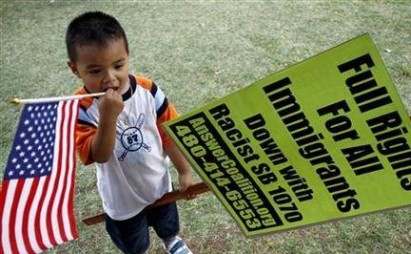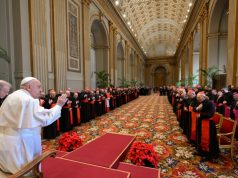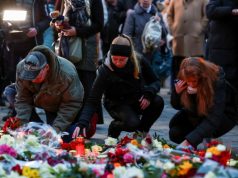Editor’s note: Cesar Polvorosa Jr. is a business school professor of economics, world geography, and international business in Canada and a published writer in economics, business, and literature. Some sections are revised excerpts from his chapter in the book “Filipinos in Canada” published by the University of Toronto Press (2012). This is the second of three installments. The first article came out 19 November 2014. Expect the third part on Wednesday, November 26.
Renowned Canadian writer M.G. Vassanji’s novel “The In-Between World of Vikram Lall” is a story of a descendant of Indian immigrants in East Africa. The title aptly symbolizes the situation of immigrants who are caught between the world of the homeland they have left behind and the world of their destination society – being neither here nor there. It’s a stressful and challenging period in a person’s life but ultimately potentially rewarding. The Filipino is in fact well positioned to adapt quickly to an in-between world as he/she already comes from an in-between world shaped by Spaniards, Americans, Malays, Chinese, and Indians, etc.
Straddling two worlds in the everyday can be as trivial as reading both Philippine and Canadian newspapers on a daily basis. It can be being current on the election issues in Toronto while also knowing the PDAF scandal in the Philippines. The immigrant needs to be aware what the new country cherishes as fundamental rights and responsibilities e.g. human and animal rights and gender and racial equality in North America. The in-between world is deeply felt since immigration is a truly life-altering decision. The individual leaves behind the familiar world and transplants himself not only to a new and often strange world with new networks but likewise, the ripple effects of the decision extends to the future generations of the family. It’s a profound personal journey where family prosperity and stability can be achieved by surmounting the challenges of immigration through fortitude and perseverance. Success is often discerned as the reward of unwavering faith in the context of Filipino religiosity.
Every immigrant or OFW has his/her own story to tell. One couple told me that they cried every day in the first few months after arriving in Canada due to the difficulties in finding good jobs (they are doing well now). An executive had to work at a Tim Hortons coffee shop while a businessman became a mailman. While the pay can be sufficient for a decent life there is also a psychic cost due to de-professionalization. But most persevere and some prosper.
Many families emerge stronger but there are also some that break up from the strain of the immigration process. Filipino couples with young kids usually declare “we are immigrating for the sake of the children” to explain sacrificing lucrative jobs and senior positions in the homeland. Typically, after the rebooting of careers over several years, the next adjustment will be in the raising of the children as they become teenagers in a different environment and who are also wrestling with their own “in-between worlds” issues such as full acceptance by their peers. Remittances from OFWs and immigrants may bring in considerable economic benefits to the Philippine economy but the social costs can also be incalculable.
The in-between world is so fraught with challenges that Citizenship Immigration Canada recognizes that it can take about a decade for a new immigrant to become fully adapted to Canada. Many old timers simply laugh when they recall the struggle of the early days.
Forging identities through business ventures and the remaking of space
Having come to terms with being “in-between worlds,” the Filipino immigrant in many ways assert his/her identity by remaking space in the Filipino image and observes both Filipino and the customs of the new country to the extent that is desirable and practical.
Many Filipino homes abroad have Last Supper paintings and altars and of course Filipino cuisine. The Filipino way is manifested through the celebrations of parties, birthdays, special occasions, and holidays. Thus, in contrast to many Western gatherings where hors d’oeuvre at cocktail parties is standard, Filipino parties are well known to have food flowing in abundance. Guests are expected to engorge themselves and bring home food. In North America particularly, Filipinos celebrate Thanksgiving, Christmas, and New Year with the traditional roast turkey but may also serve lechon and other Filipino delicacies and San Miguel beer. The younger generation celebrates Halloween and bonds with their peers from other communities through “trick or treat” while donning ghoulish costumes.
Are Filipinos able to adapt to different conditions abroad? In many simple everyday examples: e.g., the streets of Manila are chaotic and often almost anarchic but the Filipino abroad follows the street signs, uses the pedestrian lanes, and is a courteous driver. He/she is on time for meetings – but probably not with compatriots. The Filipino learns over time especially in North America to be assertive, to speak out and exude self-confidence which deviates from the traditional Filipino practices. He/she learns to separate the professional from personal matters in social interactions. The good quality and hard work, and uncomplaining and cheerful disposition greatly endear the Filipino worker to the bosses while his/her inherent friendliness and easy manners enable rapport and pleasant interactions with other ethnicities.
As a community establishes itself in the settlement society, there are so many needs such as homeland cuisine that can only be satisfied by compatriots turned entrepreneurs. The different business ventures such as remittance agencies, grocery stores, travel agencies, eateries etc. are not only for livelihood but an opportunity to recreate in the Filipino business spaces for the “myths and memories of the homeland”, in the words of San Juan. For Filipino buyers in the host societies, Filipino goods and services can induce nostalgia as they enable the Filipinos abroad to become like Filipino consumers, affirming that continuing connection with the homeland. This is best typified by the sari-sari stores (small variety stores) and turo-turo (small eateries) that are recreated overseas, in places with large concentrations of Filipinos. One is reminded that one is “abroad” as one is greeted by snowflakes outside or the desert air as the case may be as one leaves say, a Filipino restaurant. Other communities get to discover Philippine culture through its products, lifestyles, customs, and social interaction coursed through transnational businesses. The Filipino immigrant is not only changed by the immigrant society but he/she also influences the host country.
Money for computers, slippers, etc.
The locations of many complementary Filipino businesses as clusters facilitate the pursuit of Filipino customs and practices. For example, at St. Clair and Bathurst in Toronto, Filipino businesses are located near churches. After Sunday mass, many Filipino church-goers partake lunch in nearby Filipino restaurants, echoing a common Filipino practice of having a special meal after Sunday mass. In small Philippine towns, the church is at the village center and the surrounding area becomes a focal point of social interactions after religious festivals. In this way, the juxtaposed spaces of religion and business are significant factors in maintaining and reinforcing ethnic identities in the diaspora.
While eating a Filipino lunch after Sunday mass, the Filipino clientele makes small talk with the Filipino restaurant staff and other clients, read Philippine newspapers and watch Filipino teleserye on the Filipino Channel or Philippine DVDs of Filipino singers and celebrities. There is typically karaoke for parties and special occasions. Philippine paintings with rural themes, balikbayan boxes and grocery shelves are sometimes just a few feet away from the diners.
Before or after their meal, Filipino clients proceed to a nearby remittance agency, which also becomes a venue for social interaction where they chat with the staff about their seemingly never-ending financial obligations to the family in the homeland. “That’s why we remain poor because we have to send money back home regularly,” is a common lament. Indeed, Filipinos often enclose instructions accompanying the money (or balikbayan boxes) they send home – the purchase of computers and laptops, the payment of school tuition, clothes and shoes etc. and even for pairs of rubber slippers. In the span of a few hours on a Sunday, the Filipino is able to satisfy both his/her spiritual and bodily needs, bonds with compatriots as well as meet financial obligations to family and relations in the homeland.
‘Invisible visible minority’
Filipino enterprises partly address the main challenge of Filipinos of their marginalization in an immigrant society such as Canada in what I personally define as “the invisible visible minority.” I use the latter term to refer to Filipinos as a visible minority that is largely “invisible” or an ethnic group that remains economically, culturally, socially and politically marginalized as explicitly manifested in lower earnings and the absence or invisibility of high profile achievers in the areas of the arts, government, business, and politics of the Canadian mainstream and the subsequent stereotyping of Filipinos as low paid workers. This definition applies as well to many other diasporic spaces where Filipinos are considered a visible minority yet “invisible” in the mainstream life of society.
Philippine socioeconomic realities play out in the landscapes of immigration societies. A new immigrant who was a former senior executive in Manila felt embarrassed when a compatriot in Toronto who did not know her “high” social status in the homeland told her about a vacant caregiver position. Some Filipino executives prefer to be addressed as “sir” or “ma’am” by their Filipino employees but are fine being called by their first names by non-Filipino subordinates. Upper-class Filipinos retain their social status by opening businesses in the new country. However, most Filipino enterprises remain small and depend on other ethnic groups for their distribution network. Some Filipino goods find shelf space in the large Chinese owned supermarkets. These supermarkets highlight the historical middlemen role of Chinese businesses in the Philippine economy and their relatively huge sizes mirror the status of the Chinese in the homeland, where academic Henry Yeung estimated that they comprise just 1 percent of the population yet contribute 40 percent of the country’s GDP.
Is the vaunted resiliency of the Filipino enough to make him/her successful in the new country? The Filipino entrepreneur in the diaspora might represent both pride and small-mindedness i.e. he/she can establish a business that promotes Filipino culture and ethnic pride and yet is hobbled by a perception of one’s limited business capabilities. Consequently, Filipino enterprises remain small operations and there is unwillingness to venture beyond the secure but small Filipino market. With this “sari-sari store” mentality it becomes difficult to name indigenous Filipino enterprises that evolved to become dominant in the immigration societies. Is there a lack of self-confidence, vision, and innovativeness among Filipino companies?
Resiliency is absolutely necessary for survival by fostering hope and fortitude but boldness, skills, and clarity of vision are essential to become an achieving society.










